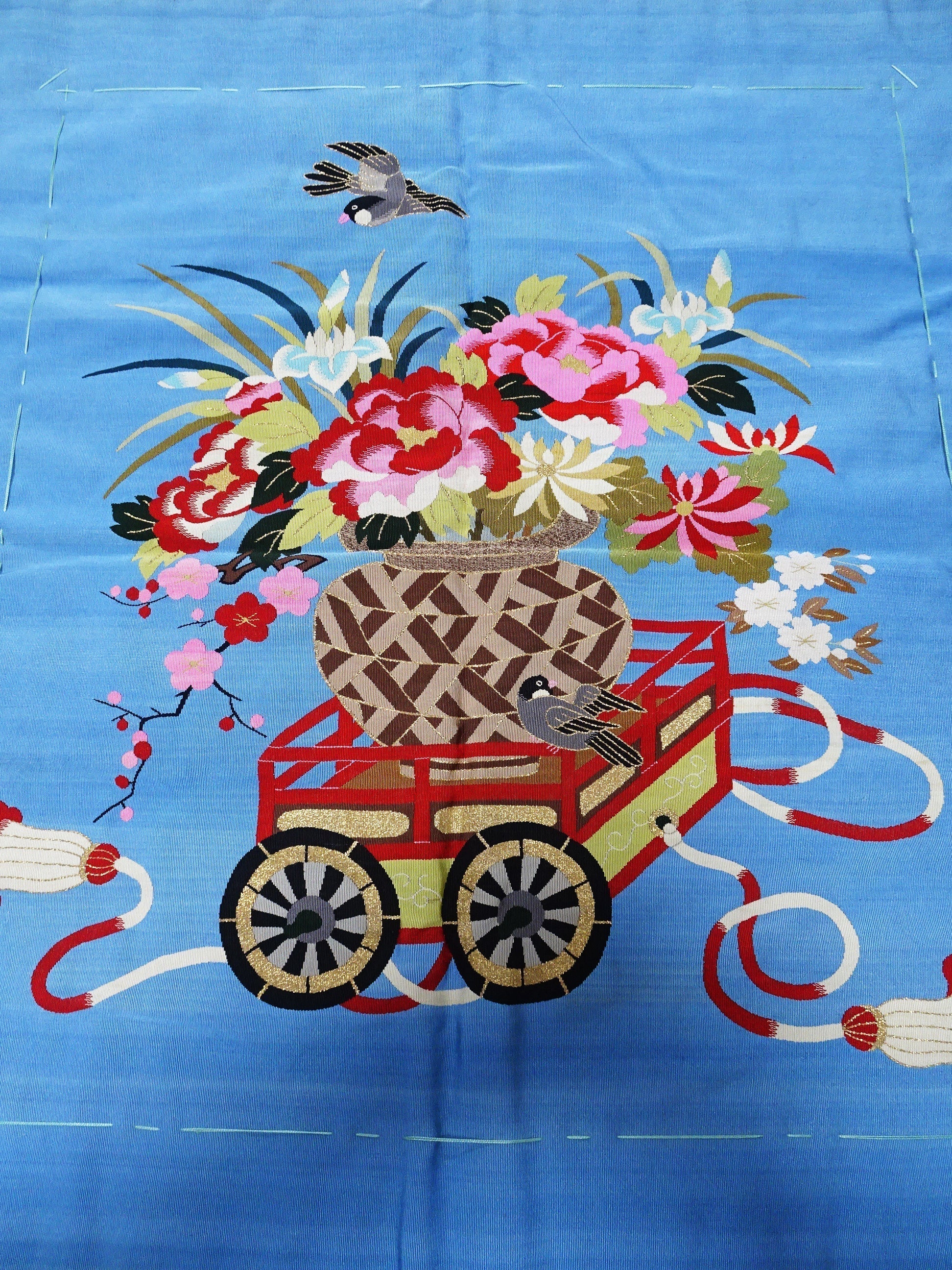Fukusa (kake fukusa and wrapping fukusa) from the Meiji period were cloth products that evolved as symbols of everyday gift-giving culture and women's education. Fukusa from that time showed a diversity of materials, techniques, and uses, and were characterized by being extremely luxurious and practical compared to modern times.

1. Fukusa for different purposes
◎ Kakefukusa
Used as a cloth to drape over gifts and celebratory items.
In the Meiji period, it became popular among samurai and townspeople alike, and was even used as part of a bridal outfit.
Decorated with gorgeous embroidery and pressed pictures featuring auspicious patterns, it showed thoughtfulness for the giver and social status.

◎ Tsutsumi fukusa (wrapping cloth)
A small fukusa used to wrap gifts and condolence money.
It comes in different colors such as purple, scarlet, and gray depending on the occasion, and has been used for both happy and sad occasions since ancient times.

2. Materials and techniques
Materials:
The mainstream style is a lined kimono with a silk outer layer (such as crepe, shiose, or satin) and a cotton or other lining fabric.
The wealthy also used high-quality materials such as brocade, karaori, and gold thread embroidery.
Decorative techniques:
Embroidered fukusa: Auspicious motifs such as cranes, pine, bamboo, and plum blossoms, and treasure ships are intricately embroidered with gold and colored threads.
Oshie fukusa: Popular in the Fukuoka region, thick paper is placed on a board and cloth or cotton is pasted on it to create a three-dimensional pattern.
There are also works that incorporate the best of the dyeing and weaving techniques of the time, such as Yuzen dyeing and Tsuzureori.

Social backgr ound and significance
Part of culture and grooming:
In the Meiji era, sewing education became popular in girls' schools, and embroidery and crafting of fukusa were included in the curriculum. Acquiring the skills became a sign of "decency" and culture.
Development as an industry:
From the 1890s onwards, specialized wholesalers were established, and unique fukusa culture took root in each region, such as Hakata and Fukuoka.
There are also cases where dyeing and kimono merchants have converted into specialized fukusa merchants (e.g. Miyai Dennosuke Shoten).

4. Examples and characteristics of Meiji-period fukusa
Large hanging fukusa with gorgeous hand embroidery: For wedding dresses and celebratory occasions, with auspicious motifs such as cranes, turtles, pine trees, bamboo, and plums. High-density hand embroidery can be seen.
Oshie fukusa: A technique originating in Fukuoka that creates three-dimensional designs of sea bream, flowers, and people.
Fukusa wrapping: Small, for envelopes, often in plain purple or scarlet colors or with crests, for use on special occasions.

5. Modern influence and evaluation
Meiji-era fukusa are valued as the culmination of etiquette culture and handicraft techniques.
Today, they are collected as antiques and are often introduced at workshops and traditional craft exhibitions, and are often remade.

Go to Antique Fukusa's sales page!






